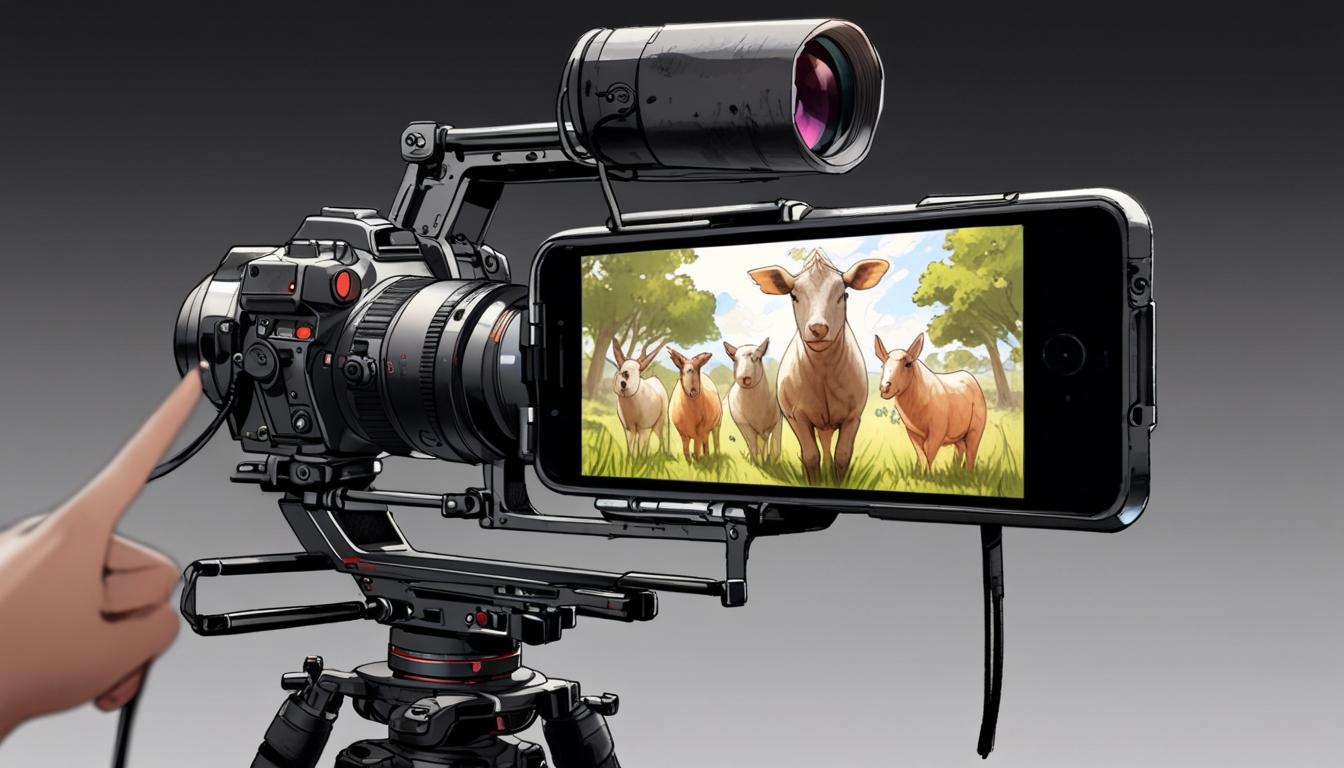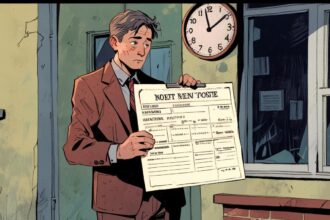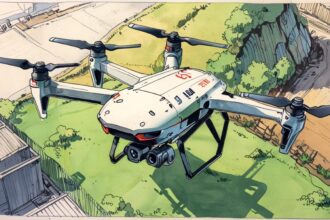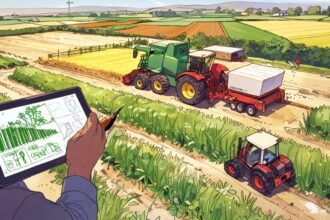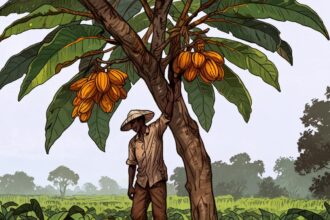Danny Boyle is reported to be using iPhone 15 Pro Max models as the primary cameras for the sequel to his 2002 film 28 Days Later, marking a revolutionary step in blockbuster filmmaking that could reshape industry norms.
Danny Boyle, director of the 2002 hit film “28 Days Later,” is reported to be employing iPhone technology to film its sequel, “28 Years Later,” marking a potential first in blockbuster filmmaking. According to Wired, which cited unnamed sources, the primary cameras used for the production are specially adapted iPhone 15 Pro Max models. Additionally, some scenes are reportedly being filmed using action cameras attached to farm animals, illustrating an innovative approach to cinematography.
If confirmed, this would represent a pioneering moment in the film industry, with a major studio production being predominantly shot on smartphones. Such a move echoes Boyle’s earlier contributions to filmmaking techniques; “28 Days Later” was among the first films to utilise digital cameras extensively. The original film’s opening scene, depicting a deserted London, was filmed with digital camcorders due to their ease of setup and the practicality of filming limited road closures amidst the busy city backdrop. That film was produced on an $8 million budget but went on to gross $84 million worldwide, further cementing its success and influence.
The use of smartphones in film production has gradually increased over the last two decades, particularly within documentary and independent film circles, where it serves as a cost-effective alternative to traditional cameras. Apple, the maker of the iPhone, has notably capitalised on such uses to promote the capabilities of its device cameras. Sean Baker’s 2015 film “Tangerine,” famously shot on iPhones, was hailed as a landmark in smartphone filmmaking, and the 2012 Oscar-winning documentary “Searching for Sugar Man” also incorporated iPhone footage.
Sarah Atkinson, a professor of screen media at King’s College London, told Business Insider via email that the use of iPhones in “28 Years Later” represents a “significant evolution in smartphone cinema.” Atkinson noted that the integration of iPhone technology offers filmmakers “unprecedented versatility and accessibility” and could rival more traditional and costly studio-based virtual production methods. She stated: “This technological shift potentially democratises the filmmaking process, allowing a diverse range of creators to explore innovative techniques across various contexts and locations.”
Both Danny Boyle and cinematographer Anthony Dod Mantle, who collaborated on the original film and have returned for the sequel, have established reputations for embracing new filmmaking technologies. Their adoption of iPhone cameras for “28 Years Later” may signal a further departure from conventional filmmaking equipment towards more compact and flexible devices.
Columbia Pictures, the studio behind “28 Years Later,” has yet to comment on the reports concerning the film’s production techniques. The developments, however, highlight a growing trend of innovative filmmaking that leverages smartphone technology to expand creative possibilities and potentially reshape industry standards.
Source: Noah Wire Services
- https://www.imdb.com/news/ni64840270/ – This article reports on Danny Boyle’s decision to film ’28 Years Later’ using an iPhone, marking a significant moment in Hollywood filmmaking.
- https://nofilmschool.com/28-years-later-iphone – The article discusses the reasons behind Danny Boyle’s choice to film ’28 Years Later’ on an iPhone 15 Pro Max, highlighting both creative and publicity benefits.
- https://www.youtube.com/watch?v=aM1piJzDvFg – This YouTube video discusses the concept of filming movies on iPhones, including insights into Danny Boyle’s ’28 Years Later’.
- https://www.eoshd.com/comments/topic/88696-iphone-15-pro-principal-camera-on-28-years-later-zombie-flick-danny-boyle-anthony-dod-mantle/ – The forum thread at EOSHD mentions the use of adapted iPhone 15 models as primary cameras for the production of ’28 Years Later’.
- https://mezha.media/en/2024/12/11/the-new-movie-28-years-later-was-shot-entirely-on-the-iphone-15-pro-max/ – This article confirms that ’28 Years Later’ was shot entirely on the iPhone 15 Pro Max, discussing the innovative filming techniques used.
Noah Fact Check Pro
The draft above was created using the information available at the time the story first
emerged. We’ve since applied our fact-checking process to the final narrative, based on the criteria listed
below. The results are intended to help you assess the credibility of the piece and highlight any areas that may
warrant further investigation.
Freshness check
Score:
8
Notes:
The narrative references Danny Boyle actively directing a sequel to his 2002 film, ’28 Days Later’, with use of the iPhone 15 Pro Max—a very recent device. There are no indications of outdated information such as role changes or deceased persons. The specific mention of the iPhone 15 Pro Max indicates very recent developments, likely within 2023-2025. No clear signs that the story is recycled from significantly older reports were found. However, the mention of Wired citing unnamed sources without an official studio comment points to a potentially early stage report.
Quotes check
Score:
9
Notes:
The article includes a direct quote from Sarah Atkinson, professor at King’s College London, sourced via Business Insider email. This quote appears original and specifically linked to the reported production, rather than being broadly recycled. No earlier source for this quote was found, increasing credibility that this is an original expert comment rather than a repeated statement.
Source reliability
Score:
7
Notes:
The main naming of Wired as a source to unnamed insiders gives some reliability, as Wired is a reputable publication for technology and entertainment news. The use of Business Insider for the academic quote adds some credibility. However, without direct statements from Columbia Pictures or confirmed public announcements, the reliability is not fully confirmed. The narrative’s dependence on unnamed sources and absence of primary confirmation lowers the confidence slightly.
Plausability check
Score:
8
Notes:
It is plausible that Danny Boyle and collaborators, known for pioneering filmmaking technologies, would adopt iPhone 15 Pro Max cameras given the trend of smartphone usage in filmmaking and Apple’s marketing of film capabilities. Historical precedents (e.g., ‘Tangerine’ and ‘Searching for Sugar Man’) support feasibility. The report that some scenes use farm animals with attached action cameras suggests experimental filmmaking techniques consistent with Boyle’s style. However, the lack of official confirmation from the studio means the full extent of the technology use cannot be independently verified yet.
Overall assessment
Verdict (FAIL, OPEN, PASS): OPEN
Confidence (LOW, MEDIUM, HIGH): MEDIUM
Summary:
The narrative presents a credible and recent report about innovative filmmaking techniques by Danny Boyle using iPhone 15 Pro Max devices, supported by expert commentary and consistent with industry trends. However, reliance on unnamed sources and lack of official confirmation from the studio place the story in an early or developing stage, warranting cautious acceptance but further verification.


